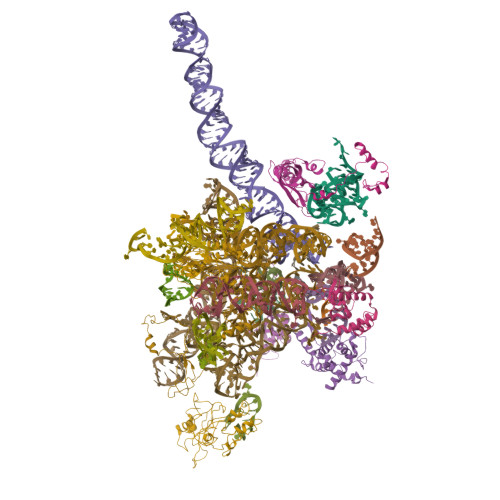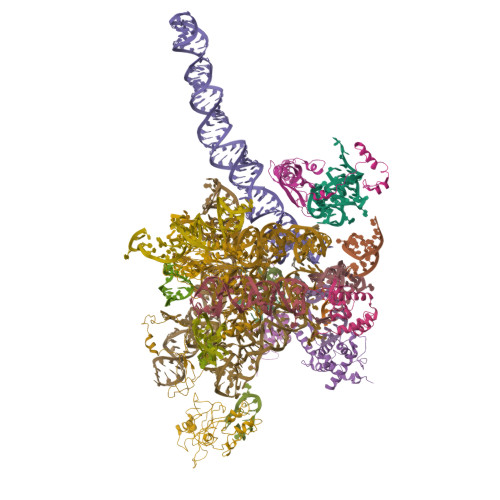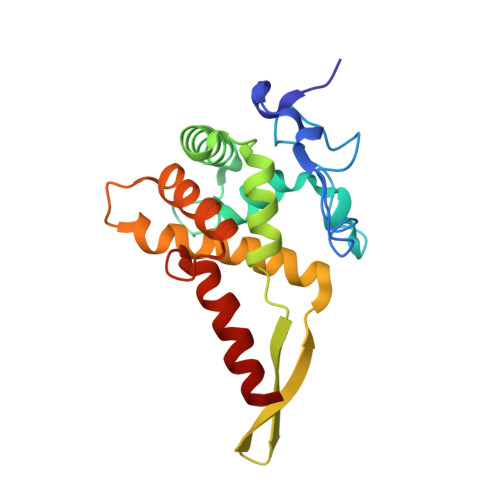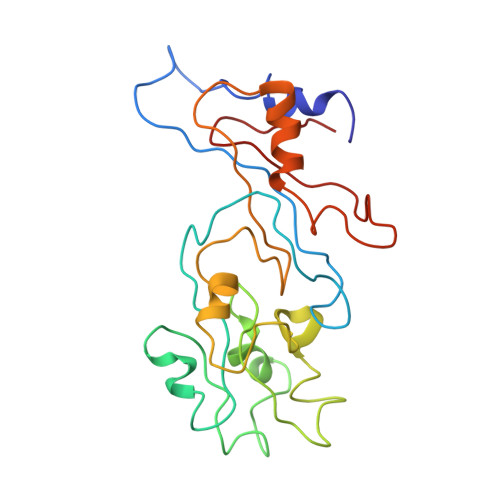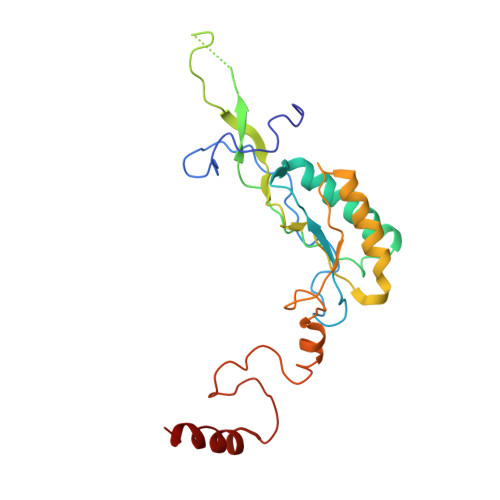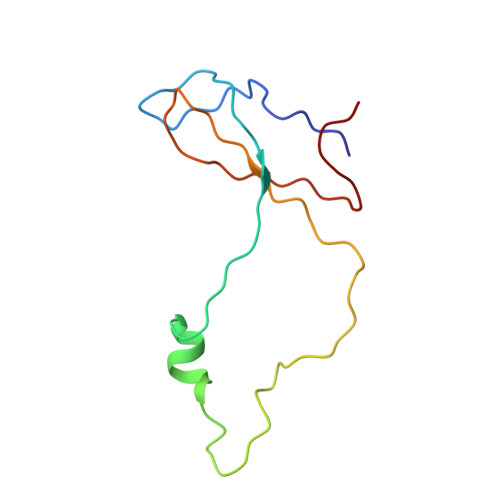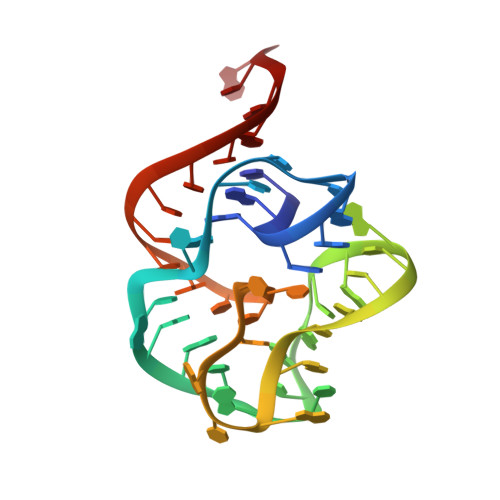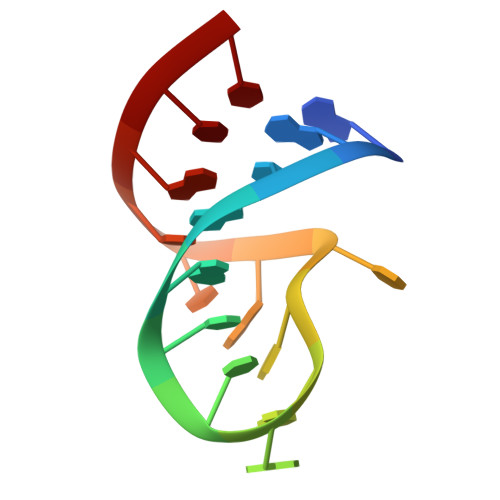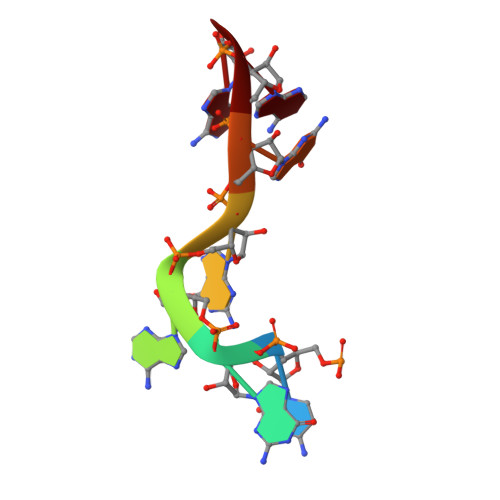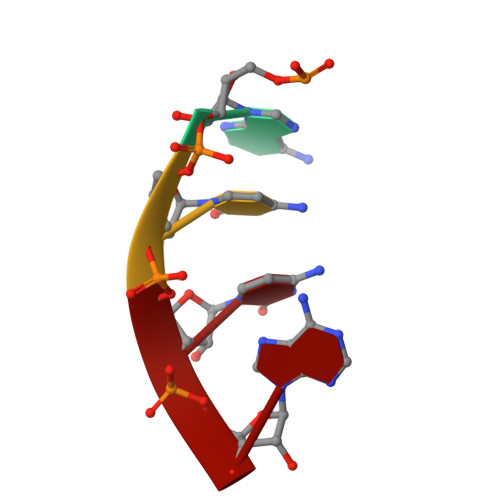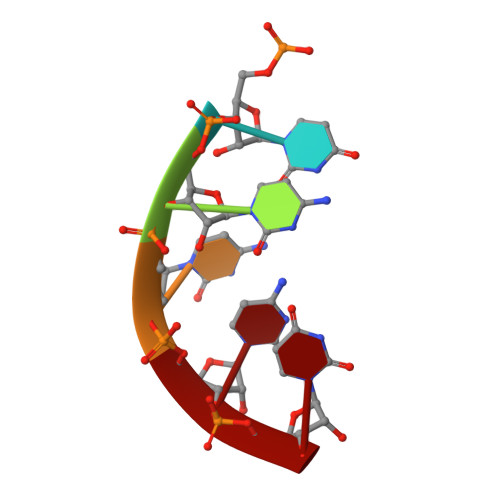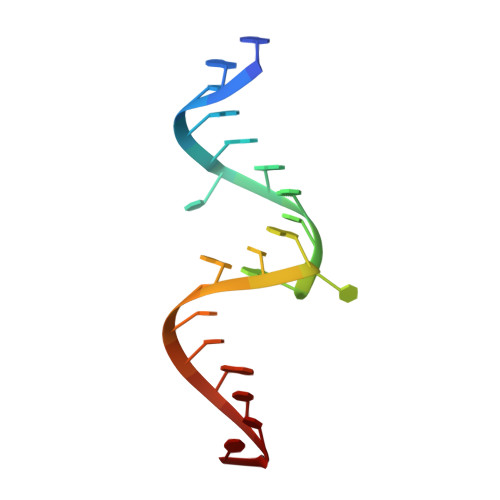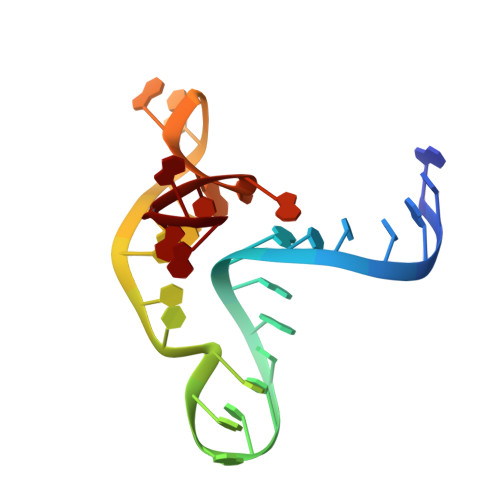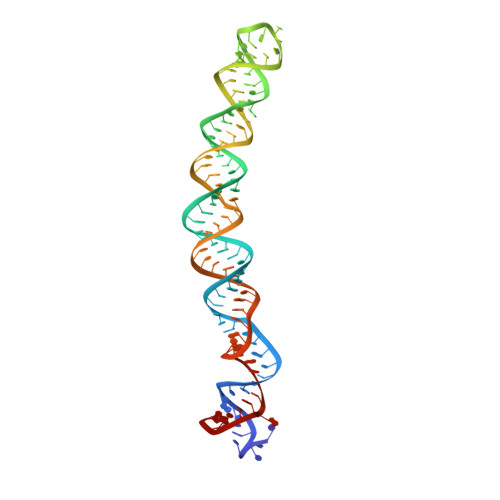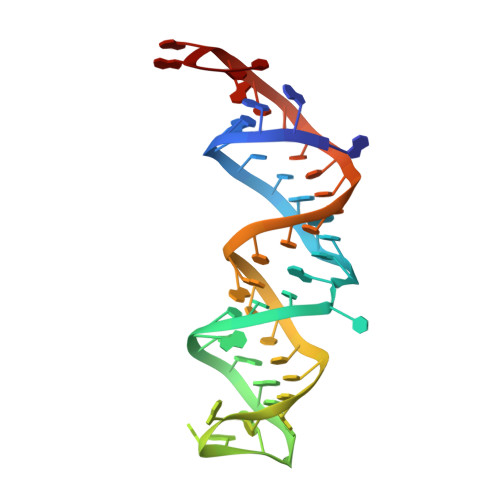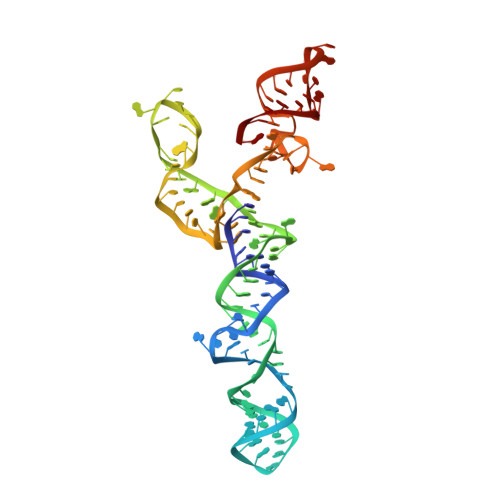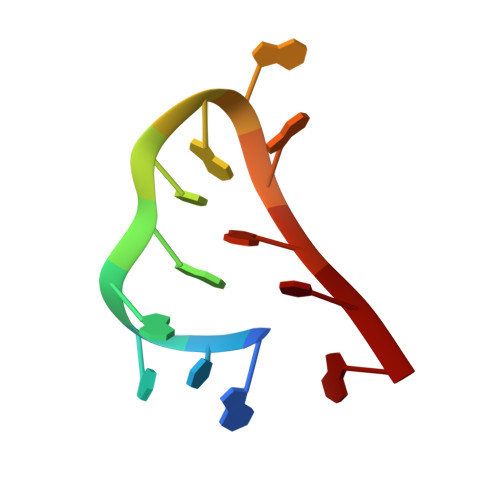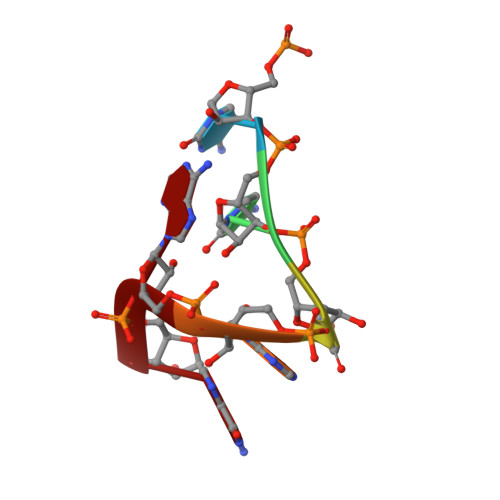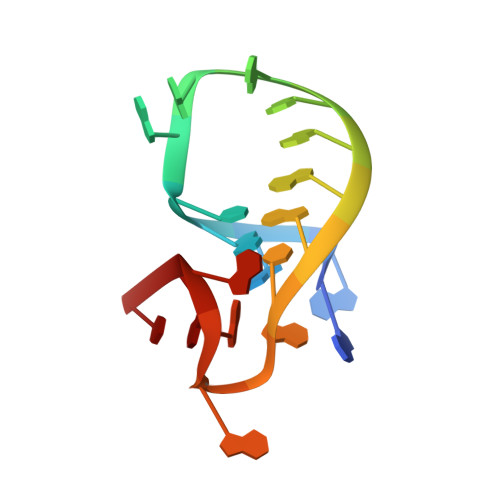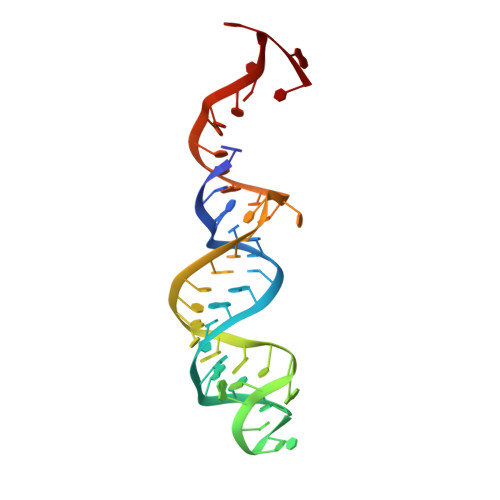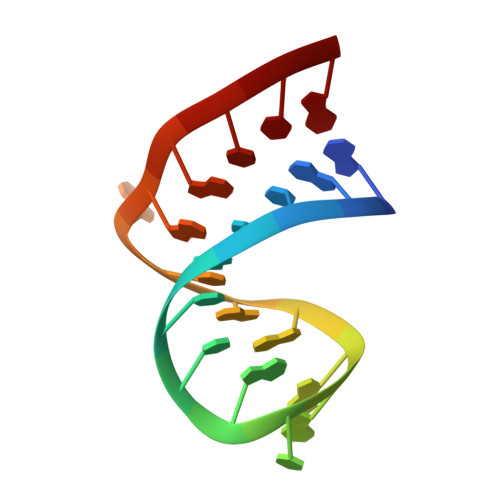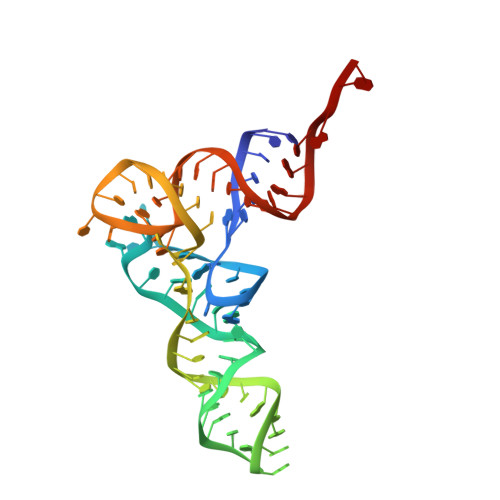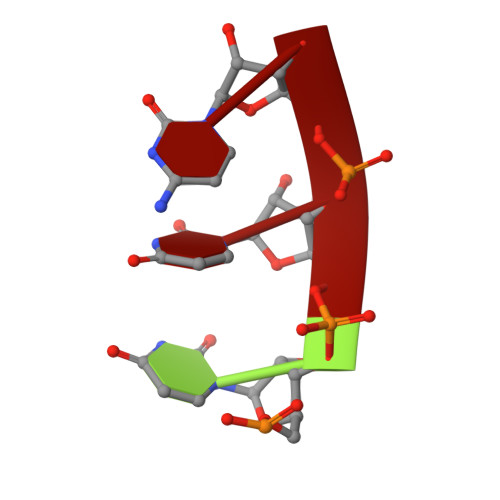Structure and dynamics of the Mammalian ribosomal pretranslocation complex.
Budkevich, T., Giesebrecht, J., Altman, R.B., Munro, J.B., Mielke, T., Nierhaus, K.H., Blanchard, S.C., Spahn, C.M.(2011) Mol Cell 44: 214-224
- PubMed: 22017870
- DOI: https://doi.org/10.1016/j.molcel.2011.07.040
- Primary Citation of Related Structures:
3J0L, 3J0O, 3J0P, 3J0Q - PubMed Abstract:
Although the structural core of the ribosome is conserved in all kingdoms of life, eukaryotic ribosomes are significantly larger and more complex than their bacterial counterparts. The extent to which these differences influence the molecular mechanism of translation remains elusive. Multiparticle cryo-electron microscopy and single-molecule FRET investigations of the mammalian pretranslocation complex reveal spontaneous, large-scale conformational changes, including an intersubunit rotation of the ribosomal subunits. Through structurally related processes, tRNA substrates oscillate between classical and at least two distinct hybrid configurations facilitated by localized changes in their L-shaped fold. Hybrid states are favored within the mammalian complex. However, classical tRNA positions can be restored by tRNA binding to the E site or by the eukaryotic-specific antibiotic and translocation inhibitor cycloheximide. These findings reveal critical distinctions in the structural and energetic features of bacterial and mammalian ribosomes, providing a mechanistic basis for divergent translation regulation strategies and species-specific antibiotic action.
Organizational Affiliation:
Institut für Medizinische Physik und Biophysik, Charité - Universitätsmedizin Berlin, Ziegelstrasse 5-9, 10117 Berlin, Germany.








